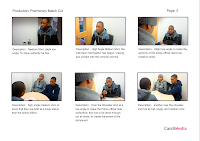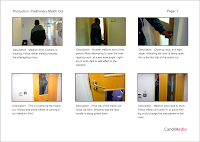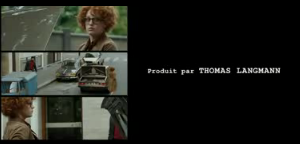Taxi driver is a film made 1976, starring famous actors such as Robert Di Nero. The opening is a discrete opening due to its functions of the mis-en-scene, sound, editing and camera work.
SCREEN TITLE : Columbia Pictures Presents
The second screen is the actor Robert Di Nero in the title and the title of the film Taxi Driver. in most films, the producer would come before the main actor but this opening differs. Columbia pictures presents Robert Di Nero in Taxi driver following on from the last screen. The film has given large credits to the company and the actor, which could be a way of synergy though promoting each other. The sound and background is blank in the title of Robert Di Nero. The explosive effect from that shot to the next is very effective as the taxi drives past. It gives a close up, still shot whilst the taxi goes past. As the audience, enough information is given that the film is set in America due to the iconic yellow taxi (Mis-en-scene). Classical Music is played in the start of the third title, starting of the film in a casual way rather than tense.
SCREEN TITLES : Robert Di Nero in
Taxi Driver
The third title continues with the smoke effect and classical music. It says the Producers names (Bill/Phillips) whilst the music is slowly starting. This shows the relevance they have in the film, although less things have been portrayed in the scene.
SCREEN TITLE : A Bill/Phillips Production of a Martin Scorsese Film
The next screen does not change until the end of 6 names on the title sequence. They appear and disappear one after another on the same screen, making it a quick way to speed up the process. The names that appear are those who are starring in the film, but they have a lesser relevance in the film due to the short screen time their name has compared to the names of the ident and the main star Robert Di Nero. The music continues from the last sequence but stays at the steady pace, not giving of any ideas that are not needed to the audience.
SCREEN TITLES : Starring Jodie Foster
Albert Brooks as Tom
Harvey Kietel
Leonard Harris
Peter Boyle as Wizard
and Cybil Shepherd as Betsy
The next shot in the opening sequence is a close up shot of the eyes of the Character. The camera focuses on him for a while as different colour street lights flicker on his face. The long screen time suggests his importance in the film, letting the audience know he is the main character without giving an exact clue who he is or where he is. the music changes from the steady pace classic music to the sound of a trumpet, giving a sense of relaxation as well as confusion. After a couple seconds, the music producers name is shown
SCREEN TITLE : Music by Bernard Herrmann
The window of the car is shown from the inside of the car, showing colourful effects of the street lights through the rain drops on the window. the music soothes down steadily, as the wind wipers move. This keeps the flow running so the audience are entertained in a basic but effectful opening. The titles then appear.
SCREEN TITLE : Supervising Film Editor Marcia Lucas
Film Editors Tom Rolf A.C.E / Melvin Shapiro
The last scene fades from one scene to another, giving a blurry vision and keeping the vision constant throughout the rest of the opening. the rest of the cast and crew are named in the titles. the music continues in a steady pace, as the blurry vision only gives enough visual ideas that the character is on a road at night in a car, maybe somewhere busy due to the colourful street lights
At the end of the titles, it then goes back to the close up of the characters eyes. He looks almost as if he is lost in a different world, giving the audience limited implications on what can happen next. relating to the previous scenes, it is like a flashback that the character has waken up from,as the same eyes being shown twice is repetitive but effective due to the significance it may have on the film.
.jpg)



































